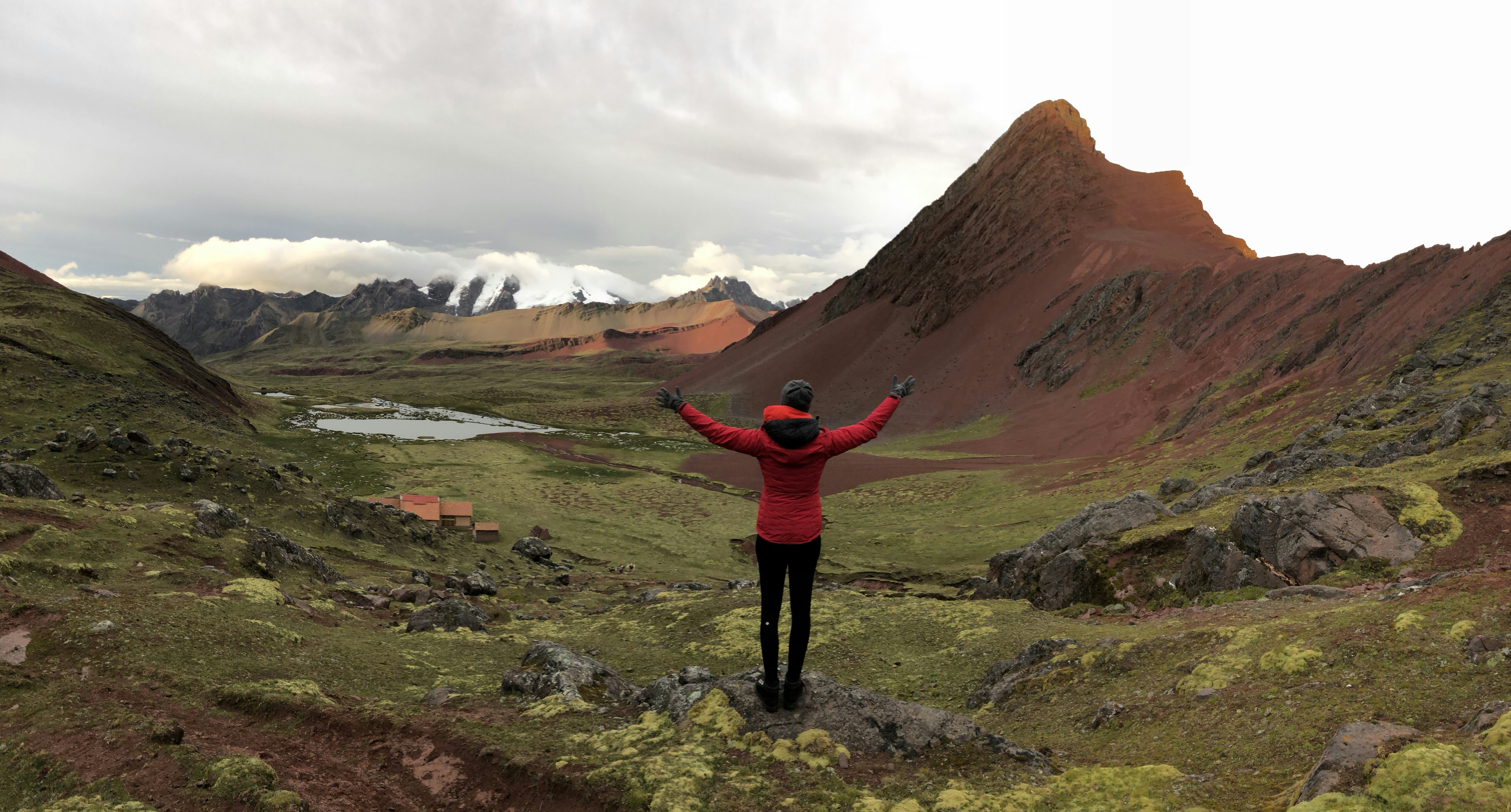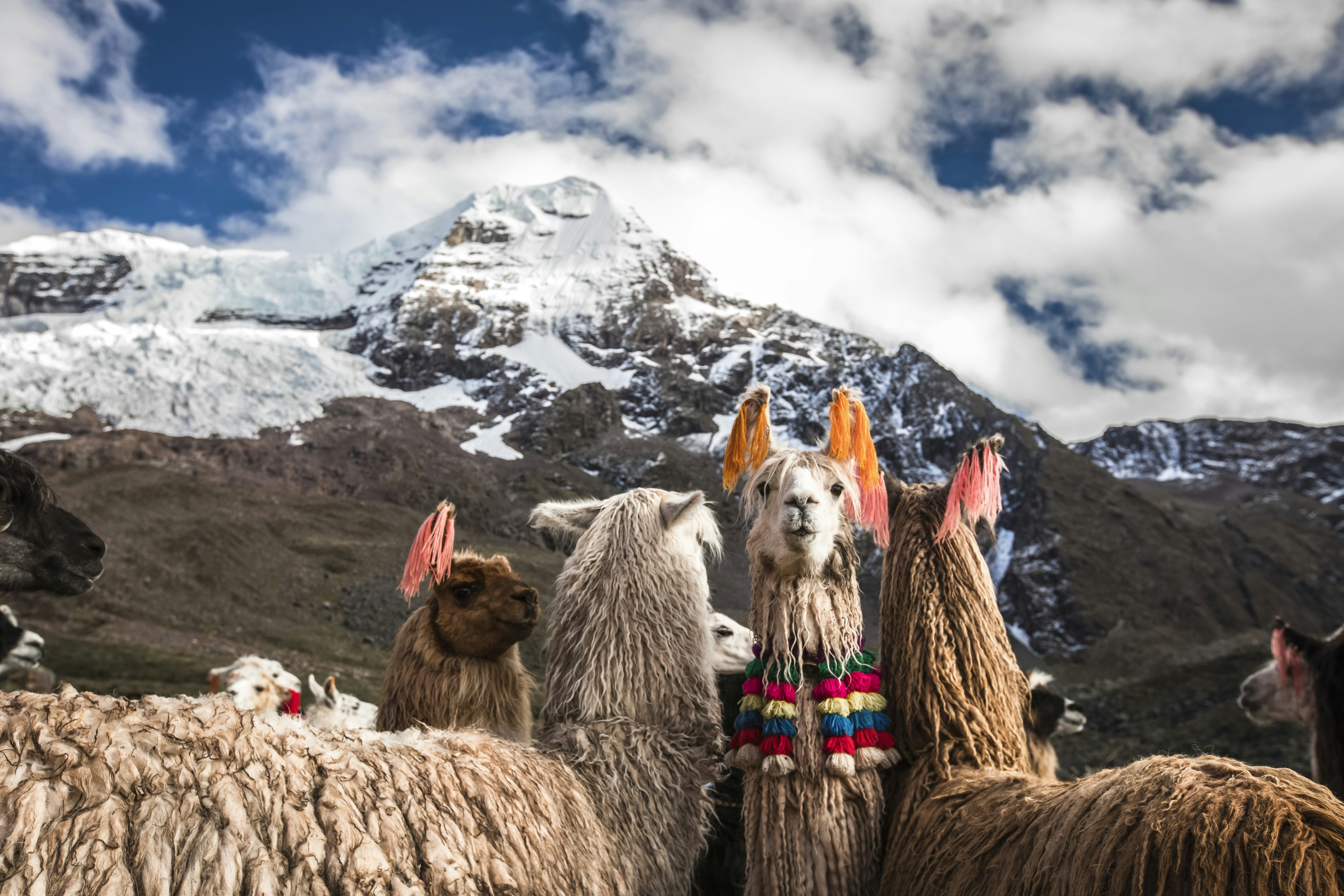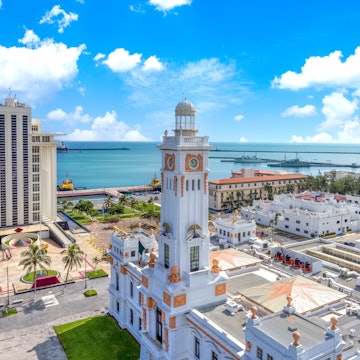

The views are endless during a hike through the Ausangate Mountains in Peru © Sarah Sekula / Lonely Planet
When you think of Peru, chances are, Machu Picchu instantly comes to mind. Or maybe the Sacred Valley. Or perhaps Rainbow Mountain. These awe-inspiring sites are all worth visiting, no doubt. But when you need a bit more elbow room and a lot more solitude, a trek through the Ausangate Mountains is a welcomed respite and just as gorgeous.

For this particular trip, I chose Ausangate, one of the highest treks in Peru. Along with, Bruno Lopez, an Andean Lodges guide, we, quite literally, followed the same paths the Incas took thousands of years ago. It’s all thanks to an extensive system of ancient trails created by llama herders.
As far as the eye can see, it’s snow-capped peaks, turquoise lakes and fields of roaming llamas and alpacas. An added bonus: it’s also one of the least crowded hikes. You can go an entire day and see only a few other people.
“It’s one of the most beautiful places in Peru,” says Lopez. “And the fact that you can be immersed in the indigenous communities and their ancient way of life is pretty special.”
We begin our foray into the wilderness at a steady pace. The two-day trek should be considered an intermediate-level hike, but strenuous because of the altitude. It's best to get acclimated for a few days in Cuzco before making the trek.

Gradually, we ascend through a valley, home to some of the highest potato crops in the world. Before long, we’re bombarded by a herd of about 100 alpacas, many of them quite young and wobbly.
By the looks of it, they’d just gotten haircuts. The wool on their bodies is cropped, but the fluffy top-dos are left untouched making their periscope necks even more hilarious.
We pass through millions of years of geologic history in the form of granitic cliffs, tumbling streams and limestone forests. The dramatic scenery, Lopez explains, was created by several tectonic forces and the presence of minerals is very high. Silver, copper and iron are scattered everywhere. This explains why several mountains in the area could be considered “Rainbow Mountains” and why I keep spotting rocks that any geologist would envy.
At sunset, a steep march up a rocky hillside brings us to the best views yet. The jumble of snowy peaks to the left are known as Nevado del Inca. To the right, neon-green grass and moss-covered rocks dot the Ausangate mountainside. Straight ahead, I see the vivid hues of the Red Valley. The icing on the cake: a bright blue lagoon where llamas are grazing.
We arrive at a two-story abode run by Andean Lodges. Here, we are greeted with a warm meal that could rival the best restaurants in Cuzco, and coca tea, a drink meant to ward off altitude sickness.
As we warm up by the fire Lopez tells me that the lodge-keeper Mario used to make 3-week treks from this area all the way to the Amazon and back on a regular basis. With his family in tow, no less.

Onward and upward
After a hearty Andean breakfast, we load our gear and resume our hike, donning rain jackets this time. Hail is beginning to fall through the thick layer of fog and within 20 minutes, snowflakes appear. Instantly, the sweeping landscape looks even more magical.
After a few hours of trekking, I point out what looks like lines of large white polka dots crisscrossing the side of a red mountain in the distance. Lopez explains that it’s actually just snow that has filled in the llama footprints.
It’s no wonder these types of treks are appealing; the scenery is outstanding. Pepe Lopez, owner of Apumayo Expediciones, says travelers come not only from the USA, but also Canada and Europe to see the Ausangate Mountains. To know that they are simultaneously assisting this isolated community is even better.
“Andean Lodges incorporates the traditional knowledge of the residents of the communities of Chillca and Osefina in order to preserve them and to help them settle into the modern economy,” says Dan Austin, owner of Austin Adventures, which customizes trips to Peru. “It was important to return the work to the llama herders.”

After two days, our adventure ends at Rainbow Mountain, a 17,000-foot-high social-media sensation. Created by mineral deposits, its psychedelic bands of turquoise, lavender, red-violet and gold are quite a spectacle. It’s a nice finale, indeed, but also an end to the solitude we’ve been enjoying. Ultimately, Rainbow Mountain is one tiny piece of a vast mountain range exploding with color. It’s all magnificent, but if you go just for Rainbow Mountain, you’re not seeing the whole picture.
Andean Lodges programs last from two to seven days and include bus transportation, guides, eco-lodge accommodations, first aid/oxygen supply and meals. The best time to go is between March and November.
Sarah Sekula traveled to Peru with support from Andean Lodges. Lonely Planet contributors do not accept freebies in exchange for positive coverage.

Plan with a local
Experience the real PeruLet a local expert craft your dream trip.














